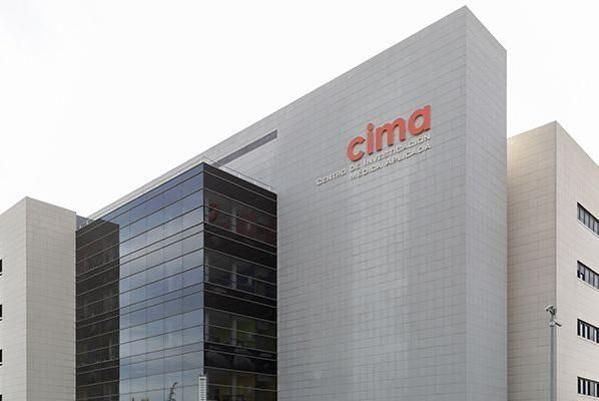Centro de Investigación de Medicina Aplicada (CIMA)
Centro / Instituto vinculado a la Universidad de Navarra


Claude Bernard University Lyon 1
Villeurbanne, FranciaPublicaciones en colaboración con investigadores/as de Claude Bernard University Lyon 1 (13)
2021
2019
-
Pharmacological Induction of a Progenitor State for the Efficient Expansion of Primary Human Hepatocytes
Hepatology, Vol. 69, Núm. 5, pp. 2214-2231
2018
-
Epigenetic prediction of response to anti-PD-1 treatment in non-small-cell lung cancer: a multicentre, retrospective analysis
The Lancet Respiratory Medicine, Vol. 6, Núm. 10, pp. 771-781
2017
-
Predictors of responses to immune checkpoint blockade in advanced melanoma
Nature Communications, Vol. 8, Núm. 1
2016
-
PDC therapy induces recovery from EAE by recruiting endogenous pDC to sites of CNS inflammation
Journal of Autoimmunity, Vol. 67, pp. 8-18
-
ΔNp63α silences a miRNA program to aberrantly initiate a wound-healing program that promotes TGFβ-induced metastasis
Cancer Research, Vol. 76, Núm. 11, pp. 3236-3251
2012
-
Detectable clonal mosaicism and its relationship to aging and cancer
Nature Genetics, Vol. 44, Núm. 6, pp. 651-658
-
Matrigel-embedded 3D culture of Huh-7 cells as a hepatocyte-like polarized system to study hepatitis C virus cycle
Virology, Vol. 425, Núm. 1, pp. 31-39
2011
-
Temozolomide in elderly patients with newly diagnosed glioblastoma and poor performance status: An ANOCEF phase II trial
Journal of Clinical Oncology, Vol. 29, Núm. 22, pp. 3050-3055
2010
-
Novel tumour-specific promoters for transcriptional targeting of hepatocellular carcinoma by herpes simplex virus vectors
Journal of Gene Medicine, Vol. 12, Núm. 12, pp. 956-967
2009
-
Identification of replication-competent HSV-1 Cgal+ strain signaling targets in human hepatoma cells by functional organelle proteomics
Molecular and Cellular Proteomics, Vol. 8, Núm. 4, pp. 805-815
-
Identification of replication-competent HSV-1 Cgal+ strain targets in a mouse model of human hepatocarcinoma xenograft
Journal of Proteomics, Vol. 73, Núm. 1, pp. 153-160
-
The tight junction-associated protein occludin is required for a postbinding step in hepatitis C virus entry and infection
Journal of Virology, Vol. 83, Núm. 16, pp. 8012-8020